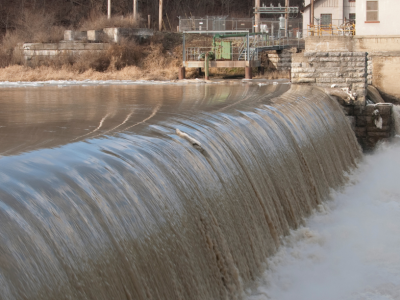
Testimony of the Vermont League of Cities and Towns
Ted Brady, Executive Director
Senate Natural Resources and Energy
Regarding S.213 (Wetlands, River Corridor, and Dam Management)
January 18, 2024
My name is Ted Brady, and I am the Executive Director of the Vermont League of Cities and Towns, a non-partisan, nonprofit organization comprised of all 247 cities and towns in Vermont. Another 144 units of local government – such as our villages, fire districts, and regional planning commissions – are our associate members. We exist to serve and strengthen local government. I appreciate that the committee wanted to hear our opinion on S.213, a bill that would change how our state manages wetlands, river corridor management, and dam safety.
The Summer Flooding Calls for Bold Action to Mitigate Impacts of Climate Change
This summer’s flooding resulted in more than $200 million in FEMA Public Assistance eligible damage to municipal infrastructure – from roads, to bridges, to wastewater systems, to town halls. Much of this damage occurred along the banks of rivers, streams, and brooks. We have firsthand experience evaluating these damages. VLCT provides property insurance to more than 95 percent of Vermont’s municipalities, and of the more than $3 billion in municipal properties we cover, nearly $500 million lie in high hazard flood zones as identified by FEMA. About 15 percent of city, town and village owned insurable property appears to be at high risk of future flooding. That percentage will only increase after FEMA revises their flood maps. And this property doesn’t include a single road, bridge, or culvert – which we all know are often built in the valleys of rivers, streams and brooks. Clearly, we have to manage future development more purposefully near our waterways. And, we need to plan for mitigation in the billions of dollars of infrastructure already there.
Municipalities Might Welcome Help Managing Our River Corridors
My understanding is that S.213 would remove the authority of municipalities to regulate development in river corridors and centralize that responsibility with the Agency of Natural Resources. While on its face, this proposal flies in the face of local control – a central tenant of VLCT’s legislative policies adopted by our membership – I believe the goal of coordinating the regulation of development in river corridors recognizes that waterways don’t respect municipal boundaries, and what one town does upstream impacts downstream municipalities.
VLCT specifically appreciates S.213’s inclusion of a provision enabling communities to receive delegated authority to regulate river corridor management. It’s clear that several Vermont communities do have the technical expertise to undertake this work, while others may not.
While VLCT is open to a more centralized process for managing river corridor development, we’d like to bring the committee’s attention to a few concerns we have:
- Any centralization must create multiple opportunities for municipalities to weigh in, challenge, or support how the state regulates river corridor management;
- Vermont’s Regional Planning Commissions are critically important to helping municipalities prepare, respond and mitigate flood hazards, and should be involved in the process whether retained at the local level or the state level;
- VLCT believes this work will cost more than the bill currently estimates, as the existing system relies on volunteers, part-time staff, and non-state staff that are generally paid less than state staff and have fewer benefits.
Municipalities Own Dozens of Dam That Could be Impacted by S.213
Finally, as you undertake dam safety conversations, including considering resources to help dam owners make improvements, I wanted to remind the committee that Vermont municipalities own nearly 100 different dams across Vermont. Communities need help managing these dams – especially access to funding to improve them. As the insurer of many of these dams, I’m personally concerned that these structures need more regular inspection and a partnership with the state to improve them. I also believe the highest priority of the Legislature related to municipally-owned dams should be recognizing the state/local partnership necessary to make our communities safer and more resilient.
Thank you for the time today. I’d be happy to answer any questions.